Delivery and Curbside Pickup

I know exactly how many times we had food delivered to our house when I was growing up: zero. We lived so far out of town that it wasn’t even an option. That has carried on into adulthood and I’ll rarely pay the extra money to have something delivered.
With the lockdown this year, we’ve gotten a lot more used to doing delivery and curbside pickup. The gig economy-style services (Grubhub, DoorDash, and UberEats) seem fairly indistinguishable, but here are my reviews of various delivery and curbside pickups that I’ve attempted:
Losers:
- Home Depot – I’ve attempted curbside pickup twice. The first time, I called twice and let the phone ring probably 40 times total but never got an answer. So I went into the store and waited for quite a while before finally someone went to get my order. The second time, the curbside pickup spots were clearly being used by random customers going into the store and it was so crowded that it took forever to find a spot near the designated area. It was so busy that I felt dirty participating in shopping there at all. Since there are some projects at home that really need to get done, my only recourse is to try and order as much as I can online or at least let my order pile up so I can make as few trips as possible.
- Qdoba – Qdoba is a staple at work. It’s within walking distance and is a favorite of our team on Fridays. We ordered burritos delivered for lunch one day and honestly, I didn’t feel like they held up. I ordered the same thing I always get but it didn’t pack the same punch. I’d definitely skip the lettuce next time because it just gets soggy and maybe I’d zap it in the microwave for a few seconds?
Winners:
- Tres Hermanos – AMAZING. They win the takeout championship. I did have to go inside to pick it up, but every single person working there had a mask on and they had two cups of pens (used and unused). And even after the drive back home, the food was still fantastic. The only slight ding I’ll give them is that it’s hard to find their menu online but honestly, it’s Mexican. What combination of rice, meat and tortillas do you want to order? And if you do need the menu, you can find it in Yelp photos.
- Good Brewing Co – I know I’m biased, but Kevin’s beer is amazing. He started up a delivery service and I’ve used it many times. He even sells his pizzas as kits that you can make yourself at home for a fun family activity. If there’s one local business that I want to support, this is the one.
- Pizza Coop – There is no better pizza and I’m happy to say their curbside pickup worked wonderfully. When I pulled up there was a number to call but an employee stepped out of the building quickly to ask my name and then brought my pizza over. The pizza wasn’t quite as good as it is fresh in the restaurant, but they’re so far ahead of the game that it was still a big hit.
- Red Robin – We don’t eat here much anymore, but they had a good deal on pickup orders so we went for it and honestly, I think I liked their food better at home than in the restaurant! When I went there, it was easy to pick up the food without interacting with any other customers. Everything was outside.
- Total Wine – Buying booze at Total Wine is a lot cheaper than getting it from Safeway and they have a bigger selection of beer too. I was a little disappointed that I couldn’t pick beer singles from their website, but otherwise this was a great experience. when you get there, you text them what spot number you’re parked in. They come out, check your id through the window and then load directly into the trunk!
Honorable mention:
- Chipotle – In contrast to Qdoba, Chipotle hit a home run. The burrito I had delivered was delicious.
- Mod Pizza – After a mixup on my first order attempt (somehow they thought I asked to have it delivered to the Mod Pizza where it was made?!), our second attempt went well. I don’t have a lot to say. Mod Pizza is good and it tasted about the same as it does in the store.
- Hollywood Tavern – If you want a Woodinville dining experience, you need to eat here. We don’t go there a ton but we decided to try their takeout. Their menu is smaller than normal and beware that there aren’t any sides with the entrees, but the food was good and the pickup experience was great (text when you arrive and they bring it out.) They do get a ding for getting Tyla’s meal wrong but they were very nice about the mixup and cleared it up for us.
Prior to all this lockdown mess, we enjoyed eating out a few times a month and it’s nice to keep that going even if we’re eating the food at home. It still means that I have a day where I’m not cooking dinner!
Cherished Moments
I continue to plow through one of Jon Schmidt’s piano books. After taking a long time to learn Waterfall, I went for an easier one and learned Cherished Moments. It’s much simpler and very relaxing to play!
Grandpa’s Clock

Both of dad’s parents have passed away and one of the things I remember from their house was a clock made from a painted saw blade. As I remember the story, Grandpa got it the saw blade from a local painter and made the wooden part around it. After they both passed away, I was very happy to be offered that clock!
Getting it back to Washington was a story in itself. I decided to bring it home in my carry on instead of shipping it. As we took our bags through the TSA checkpoint, I got pulled aside. “Sir, do you have a saw blade in your bag?!” Me: “What? No! … Oh dear… Yes. Yes I do.” The TSA agent had to check with their boss who had to check with their boss. Finally it was decided that I could bring it onto the plane since it was artwork and the blade was firmly attached to the wood. Phew!
I proudly hung that clock on the wall in my shop for about a year even though the time was never correct. The hands would move but no matter how many times I set it, they would be randomly wrong all the time. I eventually ordered a replacement clock movement and new hands and got it repaired. Now I have the clock in my shop and it even works! I think about Grandpa and his woodworking a lot while I’m out in the shop doing similar things and now I’ll have one more (working) reminder of him.
COVID-19: Part 10
When this whole thing started, it felt wonderful to be fighting something together as a global group. It’s like the story from the cold war when Reagan and Gorbachev were in tense negotiations. During a private conversation in a break, Reagan said, “If aliens attacked the United States, would you help us?” Gorbachev said yes, and after they went back into the room, negotiations went much better. Sometimes there’s a common enemy we can all fight and it brings us together.
That was nice while it lasted wasn’t it? On a recent episode of his podcast, Mike Rowe said, “A couple months ago I said, ‘For the first time in a long time, we’re all in the same boat.’ I take it back. I don’t believe we are. I think we’re all in the same storm. Our boats are different for sure.” When I open up the news, it’s full of tension and anger as each political side beats the drum and rallies the troops for another screaming match. How can people be so different when the data is so clear?
Data like this is far from clear. While this virus was expanding rapidly, the population had to learn how to understand the pace indicated by an upward line on a logarithmic scale. Now that we’re coming back down, a better metric seems to be the “R-value” or the transmission rate. An R of 1 means that for every one person who gets sick, they share it with 1 more person. If the outbreak is at that level, it means that we’re going to hold our ground. Go above 1 and we end up with a mess. Keep it below 1 and we will solve the problem. The trick is figuring out what R value we’re currently at and how that varies by region.
Uncertainty in models showing the impact of various social distancing rules combined with the fires being flamed in politics lead to a situation where everyone can find a “statistical report” that reinforces their bias. I don’t know which point of view this report backs up, but I’ve been keeping tabs on the ones that my company is involved with and one of the best is the Centre for Mathematical Modeling of Infections Diseases. Their estimates show that R is probably at or above 1 in most states. The Institute for Disease Modeling also has a very detailed dive into transmission characteristics in Washington State.
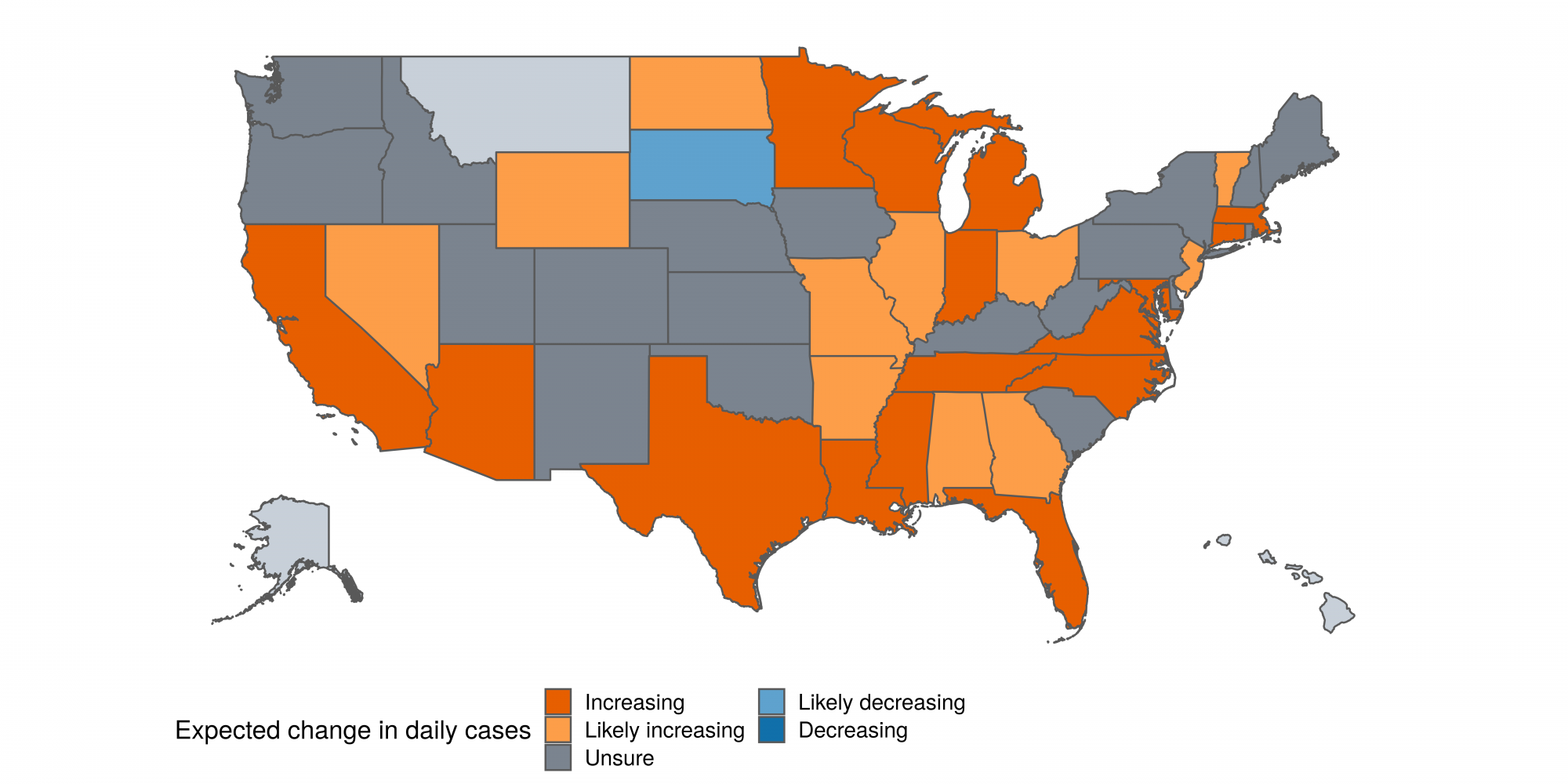
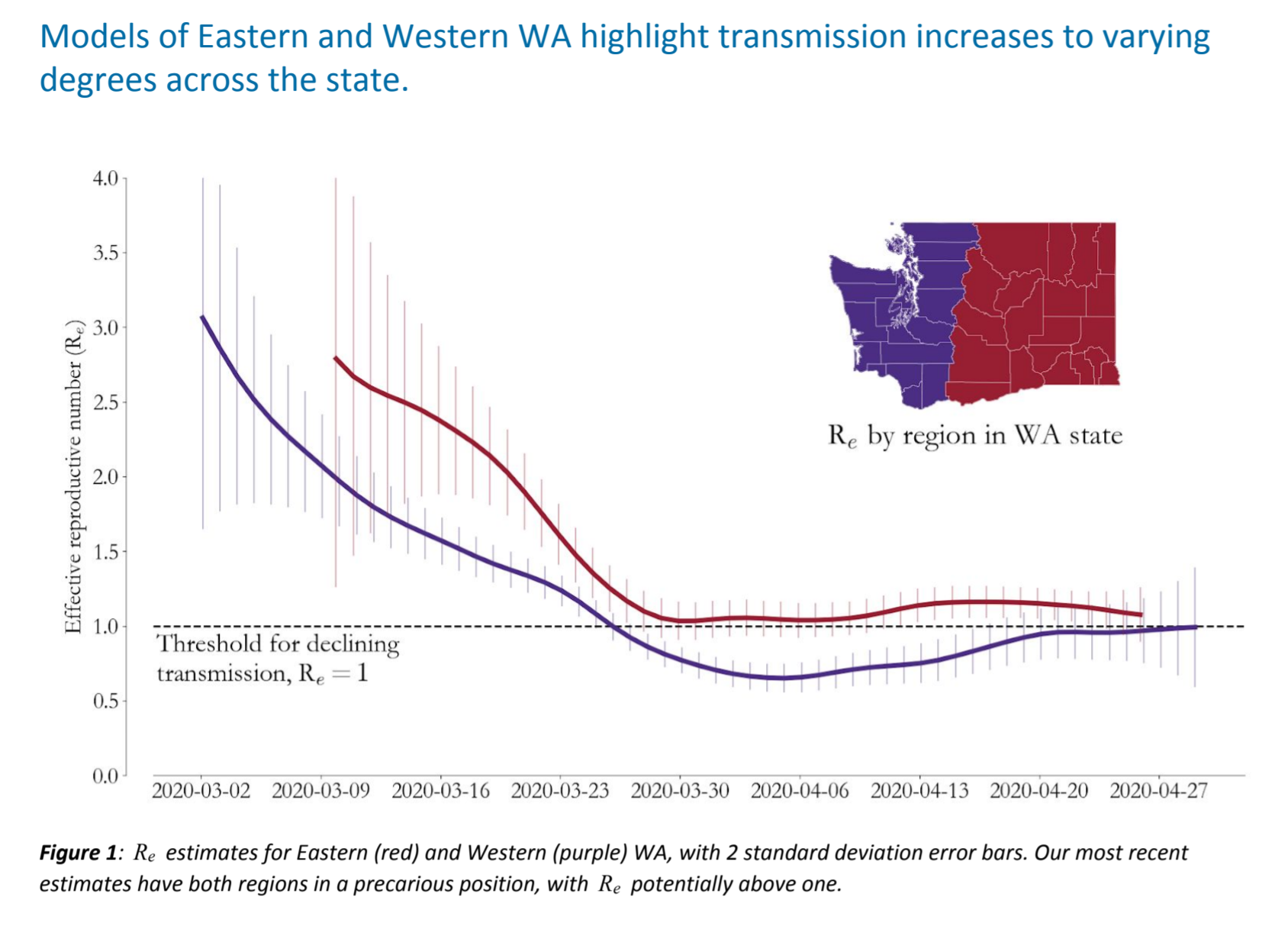
The media thrives in the uncertainty of these models. They can twist the statistics and wording, but if you skip over the media and look at the raw data, you can get a better idea of the situation and the level of confidence you can reasonably gain from it. Are we out of the woods? No way. Have the changes in restrictions over the last couple weeks taken us immediately back to huge increases? Nope. Yay for now, but this virus is pernicious. The time between being infected and having measurable symptoms is long, so the task of finding a good balance between lockdown and a return to normal is going to take a very long time.
It’s hard to know how much of this anger being flamed up around the country is legitimate and how much is an effect of being influenced by bad actors in the system. Other countries love targeting the US and feeding the frenzy. The media makes their money on eyeballs. People love to have their biases reconfirmed. It’s a lot of dry tinder.
It’s easy to get depressed with all the fighting and the numbers that arent’ trending down as fast as we’d like. But there’s hope too. There are other polls that show that we’re not really as divided and angry as it seems. I enjoyed this comic (with sources cited) from Randal Munroe:
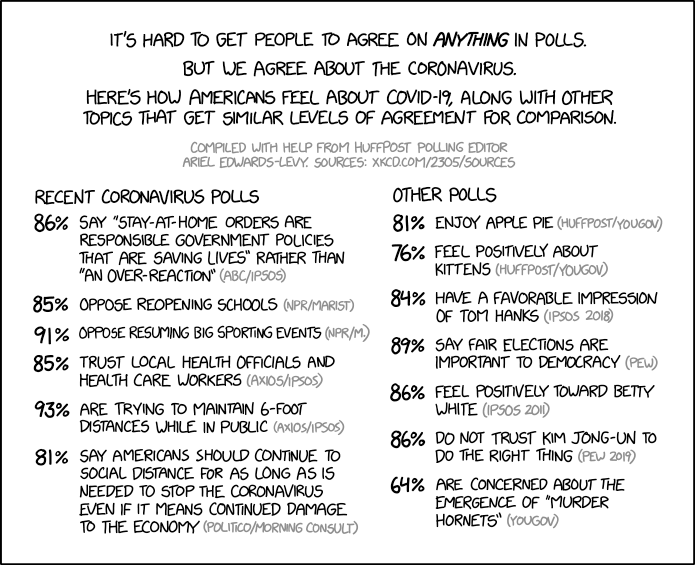
Even if the country really is divided and angry, it doesn’t mean that I have to participate. Tyla and I were talking about good things to come out of this This list will continue to grow for decades as gain more perspective, but here are a few of the things we came up with:
- We have an amazing digital library that keeps our eyeballs full of good books. A couple weeks before this all started, we had decided to get Elijah a tablet to help with his reading. So not only can we use our awesome library, but now there are floods of educational apps that have free periods. Elijah’s reading skills have skyrocketed!
- We haven’t been sick for two and a half months! That’s unheard of during school season. It’s usually a non-stop merry-go-round of viruses and bacteria flowing around.
- I do most of the cooking at dinner time and it’s challenging to keep dinner interesting on weeknights. The removal of my commute means that I can plan just about any meal on any day.
- What a perfect time for me to build a new computer! It has been a joy to work on this thing every day, and the enormous horsepower has come in very handy with all the video editing that I’ve been doing for church.
- I’ve been wanting to learn Davinci Resolve for video editing and all of this editing for church services finally pushed me over the edge. While I don’t really have any extra time to learn things since work is busy, I was forced into the situation and after a couple weeks of struggling, I’ve burst through to the other side where now I’m more productive than before and I have an endless list of new features to explore. (It’s like learning to swim the Stennis way!)
I could go on and on, but the point is that while there’s still a lot of uncertainty and we’re being encouraged to fight with “the others”, keep calm and carry on. Good things are happening too. And even if you can’t see those good things when you read the news, you can find them in your own life. Celebrate them and thank God for them.
James 1:17-21
17 Every good act of giving and every perfect gift is from above, coming down from the Father of the lights, who does not change or shift like a shadow. 18 Just as he planned, he gave us birth by the word of truth so that we would be a kind of firstfruits of his creations.
19 Remember this, my dear brothers: Let everyone be quick to listen, slow to speak, and slow to become angry. 20 Certainly, a man’s anger does not bring about what is right before God. 21 So after getting rid of all moral filthiness and overflowing wickedness, receive with humility the word planted in you. It is able to save your souls.
COVID-19: Part 9 – The Awakening
On Friday afternoon, Governor Inslee extended the Stay Home, Stay Healthy order through May 31, but more interestingly, he released the guidelines for how things will be opened back up. There are multiple phases of opening and there will be at least 3 weeks between each phase to ensure that we have time to measure the impact of the changes. Along the way, other states are going to be pushing to open back up much more quickly so we’ll have data about how well (or not) that goes.
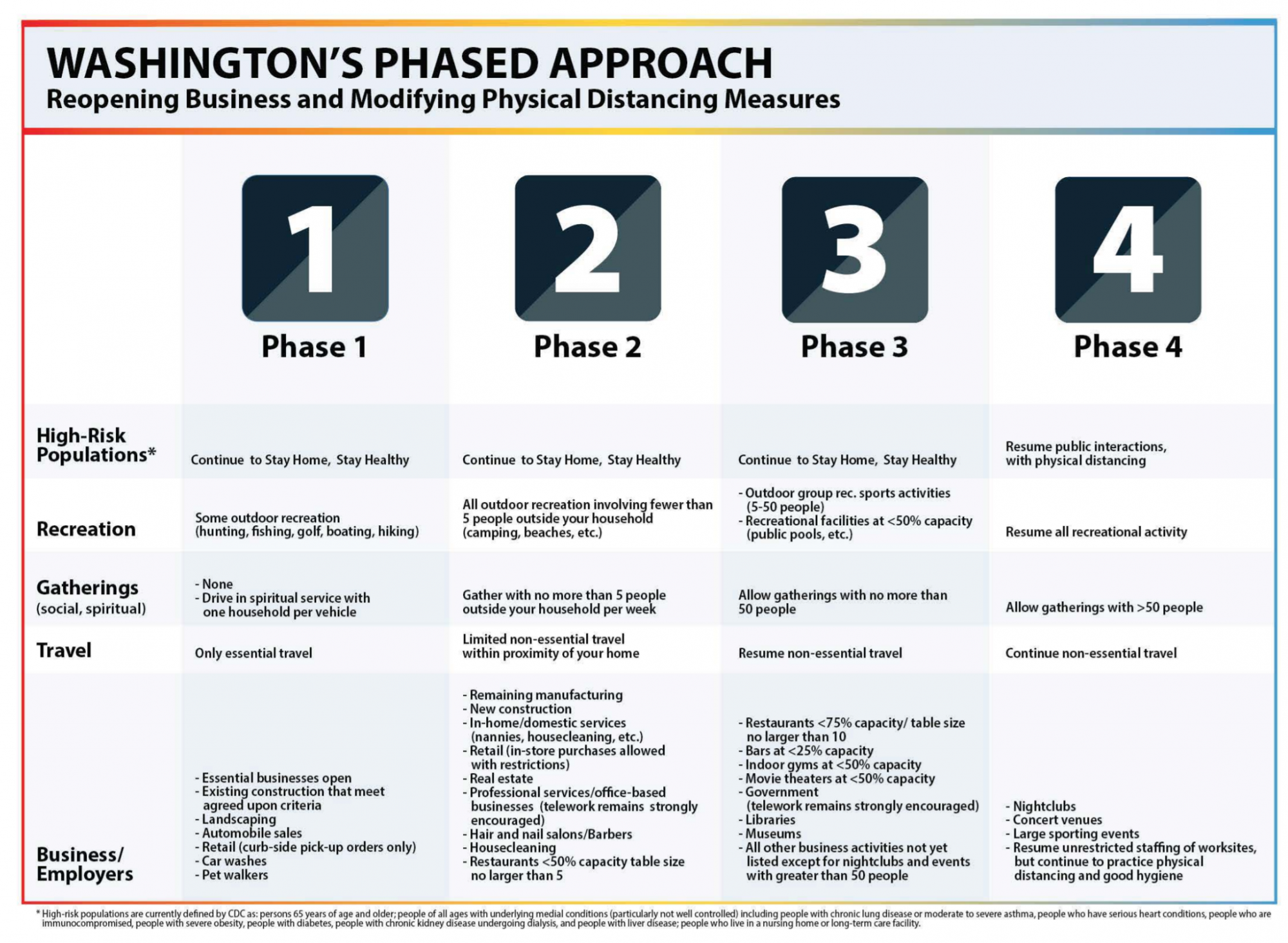
It sounds like Phase 1 could start in a couple weeks. That one is only a mild increase from what we currently have, but as an elder at our church, I’m specifically interested in the allowance for drive-in services. I’m also the resident AV geek, so that means I need to come up with a tech solution if we go that route. It will take until Phase 3 for us to start having bigger church services, although even then, we’d need to have a couple of them to fit within the limits.
Phase 2 is looking pretty good right now… it will be really nice to sit on enjoy a small barbeque with friends or family this summer! At that point I think we can let Elijah play outside with friends more too. Schools are notably absent from the plan and it’s hard for me to believe we’ll be all the way through Phase 4 by September, but we can figure that out later.
There are an increasing number of people deciding they are done with the lockdown. I hope that some of them will see this list and realize that they need to dial it back a little. (Never attribute to malice that which can be attributed to ignorance. – Hanlon’s Razor) As for me and my family, we will continue to keep any contact outside our house to an absolute minimum. Why? The government told us to stay home, and the Bible is very clear on the role of government for a Christian:
“Let everyone be subject to the governing authorities, for there is no authority except that which God has established. The authorities that exist have been established by God. Consequently, whoever rebels against the authority is rebelling against what God has instituted, and those who do so will bring judgment on themselves” (Romans 13:1-2)
So unless the government starts forcing me to do things counter to the Bible, I need to follow their rules, and in our state right now, those rules are telling me to stay home. I can disagree with the rules, but that doesn’t mean I can disobey them. I can vote to change the rules or elect new leaders, but I can’t ignore them.
We can do this. Together.
COVID-19: Part 8
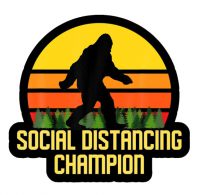
We made it through day 50 of the lockdown! Most places in the US seem to have seen their peak hospital utilization. Daily infection rates have flattened out so at least things aren’t getting exponentially worse. Our efforts are working. However, our fight is far from cheap. The economy is struggling to deal with this, unemployment is skyrocketing, and people are antsy to gather in groups again.
Your reading assignment for today is an excellent post by Bill Gates. He has devoted his life to global health issues so it’s extremely interesting to get his take on the situation. If you only have time to read one post, read his!
For my own feeble analysis, let’s start by looking at the IHME models. As we move into the long recovery period, I find this to be a great source of information. They do a good job of showing how the current load relates to the total availability of hospital resources, how the speed of recovery is uncertain and at one point we might get to a day when nobody dies from the virus in the state. I took their data normalized it by state population and then calculated the predicted total deaths per 100,000 people based on the average output of the IHME models. I think this helps to show how various states reacted to the virus and how well their efforts to slow the virus are working. I picked the top 10 states along with a few others where some of you live.
| Location | Mean Deaths Per 100,000 |
| New York | 119.4 |
| Connecticut | 84.3 |
| New Jersey | 79.5 |
| Massachusetts | 61 |
| Rhode Island | 57.7 |
| North Dakota | 46.7 |
| Louisiana | 38.3 |
| Michigan | 33.8 |
| District of Columbia | 32.4 |
| Wyoming | 27.8 |
| Illinois | 16.9 |
| Indiana | 14.4 |
| Washington | 10.7 |
| Vermont | 7.3 |
| Ohio | 6.9 |
| Minnesota | 6.4 |
| Wisconsin | 6.1 |
| Montana | 1.7 |
Some states have a harder time containing this than others. Most people are spread out in Montana so a lockdown probably doesn’t need to be very severe. New York City is much denser so they need an extreme lockdown to contain the spread. And then there’s the question of how many deaths the lockdown itself causes. What’s the right balance point? I think all we know for sure right now is that “it depends”. With this heavy social and political push to end the lockdown, it feels pretty inevitable that we’re going to start growing exponentially again. Very little has changed since the first growth period. Social distancing is the only tool we have to fight this. There’s no vaccine or treatment, and now the WHO is evening questioning whether it’s possible to build up an immunity. I do think we’re going to oscillate back and forth a bit until we find the least amount of lockdown that keeps us at some sustainable balance of infections and economic pain. I don’t think anybody has the answers about what that balance point is yet so we’ll have to fail a few times as we get it figured out.
The only way this works is if everyone participates in following the guidance provided by your local government. Doing otherwise is selfish. Stay home. Stay healthy. We can do this if we do it together.
If your government says it’s ok to start easing up on the lockdown, then use your best judgement. I know it’s going to be a long time before the three of us feel comfortable in a crowd again. I’m starting to have dreams at night where the basic premise is that I realize I’m in a crowd and regardless of how I got there, I don’t know how to extricate myself. I’m guessing I’m not alone in those kind of thoughts. Thankfully our management has already said that we will not be among the first to return to the office, and even when it is an option, we’ll all be able to keep working from home as long as we want to. I don’t expect a mad rush to fill up the office spaces again.
It has been an interesting time to be a husband and a parent too. Other than getting food, we have had almost zero contact with anyone outside our house and that’s our continued plan until the lockdown restrictions are eased. While being home together is a chance for us to bond and grow stronger as a unit, we’re very eager to have parks and hiking trails open again so we can get out a bit more. More and more trails will be snow-free as the year warms up so that will spread out the hikers and I’m confident I can find trails with low crowds on them.
Little League thinks they’re going to resume practices on May 11 and June 1. I find it highly unlikely that they’ll be allowed to operate on that schedule. On the surface that feels like a great activity since it’s outside and fairly spread out, but if you’ve ever walked through the fields on a Saturday, you know it’s a huge event. Six fields with ~12 kids each plus coaches, families, umpires, and concession booth workers add up to a big crowd in a tiny space. We opted to skip this year and use our money as a credit toward next year. I also expect a fair amount of other families will be opting out so it will be interesting to see hear if they have to combine teams or anything like that.
In the face of uncertainty, we press on knowing that God has this under control and even though we are being tested, we won’t be pushed beyond what we can bear.
James 1:2-4 2 Consider it pure joy, my brothers and sisters, whenever you face trials of many kinds, 3 because you know that the testing of your faith produces perseverance. 4 Let perseverance finish its work so that you may be mature and complete, not lacking anything.
Waterfall
Last August, Tyla and I saw the Piano Guys playing in Marymoor (so many people in a crowd! That seems unthinkable now!) Jon Schmidt is the amazing piano player half of that duet and for my birthday, I received one of the piano books he has published for his solo work.
The songs are very advanced so when I picked the first one to learn, I started with the one he said was the easiest piece in the book: Tribute. I didn’t post that one before, but I’ll include it below.
When it came time to pick the next song to learn, I opened to the first one in the book and thought, “Hmm, why not this one?” Then I fired up Spotify and listened to him play it. WHOA. So many notes in 3 minutes! It took me a few months but I was finally able to play it to my satisfaction (albeit about 15% slower than he does it and with a few more bad notes along the way.)
I feel a little silly posting these because obviously if you want to see him play the songs, you can just look them up on YouTube, but I do record almost all of my songs when I learn them because it’s fun to look back at them. I like to record them at church because that piano sounds so nice in that huge room.
So at the very least, go watch Jon Schmidt’s original version of Tribute and Waterfall. They’re beautiful pieces. My attempts are embedded below if you want to see those too.
Online Church Services
Pastor, Dave (our main organist) and I have been rapidly figuring out how to put together online church services more efficiently. The first week was Pastor recording from his laptop in his living room but now we’re doing full services recorded at church with multiple camera angles, music, hymns, and liturgy. It’s far from a professional operation and this makes me want to upgrade our gear even more, but we’re certainly doing a lot with what we have available.
Here’s our basic flow for the week:
- Pastor records the liturgy and children’s sermon. Those get copied to the computer at church and then it slowly uploads it to our Backblaze cloud backup provider so that I can download it. I usually have the files by Wednesday or Thursday. There is an MP4 file from each of the camcorders and the audio from the mics ends up on a DVD.
- Pastor records the next day and sends those to me the same way.
- Dave records pre and post service music along with all of the hymns and liturgy. He can get a WAV output file from his organ/computer at home and those files go on Dropbox.
- As the files come in from Pastor, I strip the audio out of the DVD files, align it with each of the video files and then I align the video files with each other so I can switch camera angles.
- From there I watch all the video, cut out the spots where Pastor may have done multiple takes, and remove all the points where the cameras are being moved, etc.
- For the hymns and Dave’s music, I need to have something to display on screen. We’re using only the public domain hymns so I’m able to get images of the hymns and display those.
- That would be sufficient but I’ve been adding some polish on them as well:
- Normalize the audio. Speaking is -7dB and organ is -10dB.
- Run a dialogue processor over Pastor’s audio to try and clean it up a little. Our microphone setup is really basic. It sounds fine in church but on a recording, it’s not great. This helps a tiny amount.
- Add titles at various points in the service.
- Sometimes I’ll do a little color correction on the video and I try to rotate it to make sure it’s perfectly aligned.
- At any point where the viewers are invited to sing along, I started making animated highlights that show what is being sung.
- Add subtitles for all Bible readings and the Apostles Creed
- Once everything is done, I render the video to a single MP4 file. Thanks to my new PC build, this only takes about 15-20 minutes. I end up with a file between 1.5 and 2GB.
- That file gets uploaded to both YouTube and Facebook. We get better numbers when the files are posted in each place natively instead of posting a link to YouTube from Facebook. Each of those videos needs to have all the metadata tags filled out and I make a description with timecodes for each key point in the service. Then I pick a thumbnail and schedule the release for 8am on Sunday morning.
Then I’m done! With any luck I’m done early afternoon on Saturday, but we’re getting better and Pastor is moving his schedule up so I think that soon I’ll have a week where I’m done by Friday.
Then on Sunday morning, I sit down with Tyla and Elijah to watch the service. I try hard to focus on the message but in the back of my mind I’m always cringing a little bit wondering if there’s going to be some huge mistake in the video. So far so good.

COVID-19: Part 11
I wasn’t sure if I wanted to write today, but there’s a lot of things that make this weekend special:
It seemed like all of that warranted a “where are we now” post.
Since the last post, King County has moved to Phase “1.5”. It’s basically like Phase 2 but with lower limits. So if a restaurant might be allowed to have 50% capacity in Phase 2, in Phase 1.5 they can have 25%. King County is a bit behind some other counties mostly because they aren’t doing enough testing. It’s hard to ramp up to test the right percentage of the population when you have the most populous county in the state.
The risk assessment dashboard from Washington state is the main data source that I’m watching these days. It shows the metrics that each county needs to hit to apply for the next phase. Looking at that website, it appears that King County has really been ramping up their testing and infection rates are falling so we will probably be applying for phase 2 next week.
When we were in phase 1, it was very easy to draw the line on our interaction with people outside our house because there was none. Now that we’re able to have outdoor interaction with 5 people, it’s more challenging to draw the lines. It’s important to get Elijah outside to socialize with his friends and burn off some energy, but how do you keep that to 5 people? As we’ve seen all along, these rules are difficult to implement, but we continue to do our best to follow the orders and when in doubt, I apply that guideline I quoted early in this series: If everyone else was doing the same thing, would it be ok?
As if deciding how to handle things inside my own family wasn’t enough of a challenge, I’m also an elder at church which means I’ve been having a lot of difficult meetings to figure out how to minister to our members. Our behavior inside the walls of thechurch are even more complicated since we aren’t bound biblically or constitutionally to follow guidelines that tell us not to worship together. However, up to this point we’ve been abiding by them by choice. As a group, we decided to open up a very limited service this week, following the same rules that the state government gave for other businesses even though they have said that indoor church services aren’t included yet. It was a tough choice followed by many more tough decisions about what precautions to take.
My main challenge in this was separating out valid Christian needs and desires from political anger and frustration. While the church will be open this week, my family won’t be attending this one. My thinking is that King County appears to be on the verge of Phase 2 when I’ll be able to attend church without exercising my right for civil disobedience. I don’t know how things will shake out down the road but at least for this weekend, that’s the plan. (If you want an excellent survey of what the Bible says about our responsibility to follow the government and how that applies to these pandemic orders, check out this blog post by Dr. Ryan MacPherson. It’s fun to hear from him again. We went to church with him while he was getting his PhD at Notre Dame.)
Socially, it’s challenging to have a new opportunity in our bag. Outdoor visitation with five people per week outside of our household? That is very easy to burn through. How do you pick the five people? How do you kindly tell close friends that you’re not picking them this week? I don’t have answers but we’ll figure it out.
I’m thankful that things are opening up despite the new challenges that it presents. I’m thankful that the outdoor spread of this does seem to be small as evidenced by the lack of an uptick in Seattle despite the large protests. However I’m nervous about counties like Yakima and Spokane. Yakima has one tenth the population of King County but yet they have three times more cases than King County. The quick answer from the people who want to ignore this is that “they’re just doing more testing.” If you look at the data, that is true but despite how many tests they do, they’re still getting the same rate of positives. That implies that there is a huge untested population that has the virus. Spokane is also headed in the wrong direction. After lowering their numbers and demanding that they be allowed to go to Phase 2 with the counties around them, their numbers are shooting up much higher than the first spike. Will we see more hot spots like that as things reopen?
It’s easy to get lost wondering if and when the second wave is going hit or what will school be like in the fall or will we really get a vaccine in the beginning of 2021 or how long will it take them to produce enough for everyone globally or how big will the outcry be from the anti-vaccine crowd? All of that is out of my control so I focus on my family and living our lives one day at a time. I don’t have to get through a year at a time. I just have to get through today.
With that in mind, I recommend reading the June 10 devotion from our church body titled “A New Day“. It focused on the comforting refrain from the first book of Genesis: “There was evening and there was morning.” Every day, the sun comes up and the sun goes down. God continues to be in control. He watches over us and keeps his promises. He gives us what we need each day.